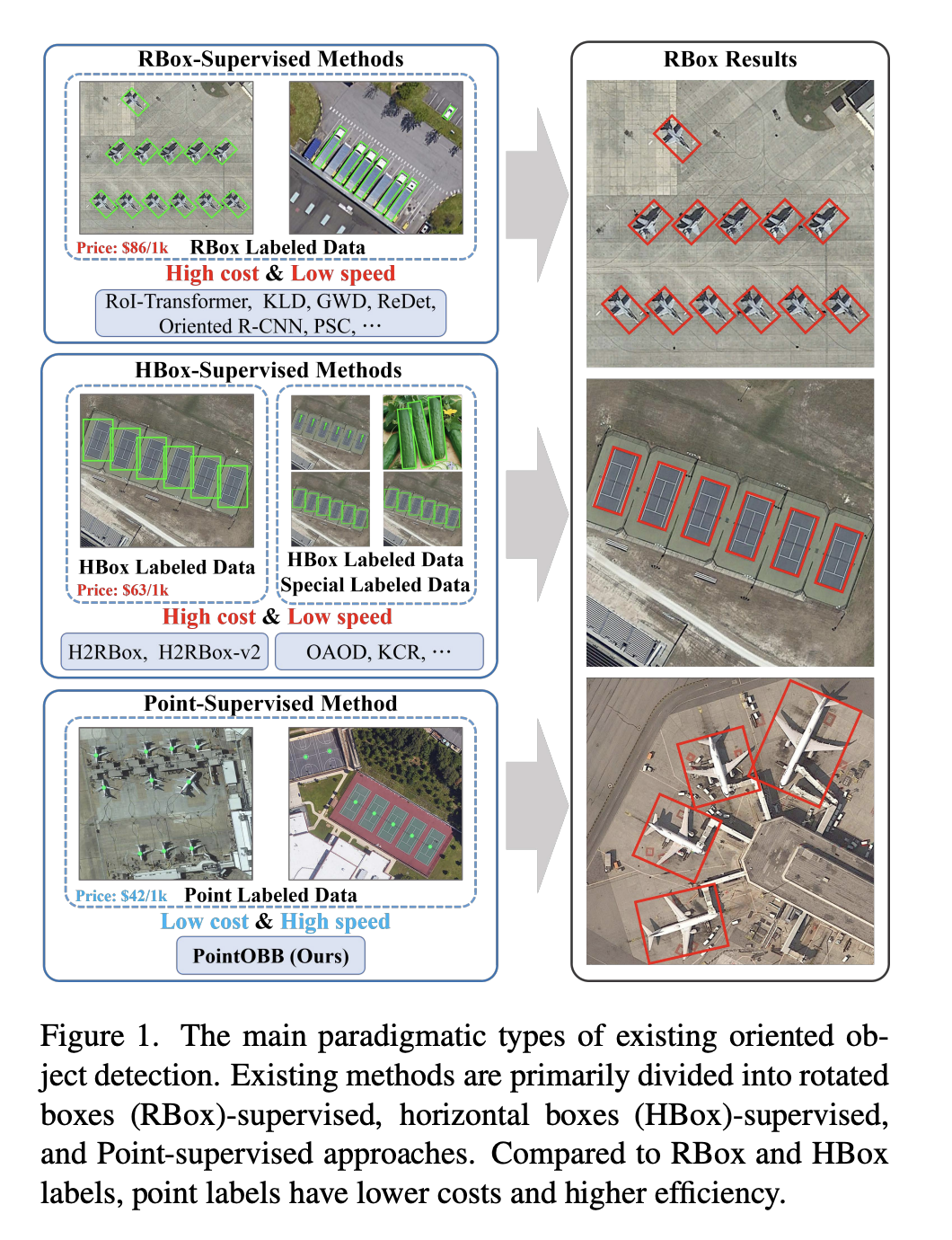
Detecting oriented objects in aerial images is a major challenge in computer vision. Traditional methods often use horizontal bounding boxes (HBBs) to identify objects in images. However, in scenarios like aerial imagery, where objects can have any orientation, HBBs may not be enough. The PointOBB framework offers a new solution, improving oriented object detection.
GitHub Repository for PointOBB Paper
The Challenge of Oriented Object Detection
Before exploring the innovations of PointOBB, it’s important to understand the challenge of oriented object detection. In many real-world applications, such as satellite imagery analysis and autonomous navigation, accurately detecting and locating objects with oriented bounding boxes (OBBs) is essential. These OBBs account for the different angles and shapes of objects, providing more accurate information for later tasks.
However, drawing OBBs in large datasets can be very expensive and time-consuming. This is where “single-point supervision” becomes important. Single-point supervision means annotating an image with a single point that corresponds to an object’s center. This minimal annotation is much more efficient than drawing precise OBBs around each object.
Introducing PointOBB

PointOBB is a new framework that introduces a novel approach to oriented object detection, using the power of single-point supervision. Developed by researchers at a leading AI research lab, PointOBB addresses the limitations of traditional methods and significantly improves oriented object detection tasks.
Key Components of PointOBB
-
Multi-View Strategy: One of the main innovations of PointOBB is its multi-view strategy. Instead of relying only on the original image, PointOBB generates multiple views of the image, including resized and rotated/flipped versions. This multi-view approach helps the network better understand object scale and orientation.
-
Scale Augmentation Module: To accurately detect object scale, PointOBB includes a Scale Augmentation Module. This module helps the network handle objects of different sizes within the image, ensuring robust detection across various scales.
-
Angle Acquisition Module: Accurately predicting object angles is a key challenge in oriented object detection. PointOBB introduces an Angle Acquisition Module that improves the network’s ability to estimate object angles, leading to more precise OBB predictions.
Performance Improvements
PointOBB has been thoroughly evaluated on benchmark datasets, including DIOR-R and DOTA-v1.0, to assess its performance compared to existing point-supervised methods. The results are impressive. PointOBB consistently outperforms its predecessors, showing its effectiveness in weakly-supervised oriented object detection.

Implications and Future Directions
The development of PointOBB opens up new possibilities in computer vision and aerial imagery analysis. Its ability to detect oriented objects with minimal annotation has significant implications for various applications, such as urban planning, disaster management, and agriculture.
Researchers and practitioners in the field can use PointOBB’s innovations to improve the accuracy and efficiency of oriented object detection in their projects. Additionally, the framework’s open-source availability on platforms like GitHub encourages collaboration and further advancements in the field.
Conclusion
In summary, the PointOBB framework represents a significant advancement in oriented object detection. By using single-point supervision and introducing innovative modules, PointOBB overcomes the challenges associated with detecting objects with arbitrary orientations. Its outstanding performance on benchmark datasets establishes it as a leading solution in computer vision and aerial imagery analysis.
As AI research continues to evolve, frameworks like PointOBB inspire us to think creatively and push the boundaries of what’s possible. With its potential to transform how we approach oriented object detection, PointOBB demonstrates the power of innovation in artificial intelligence.